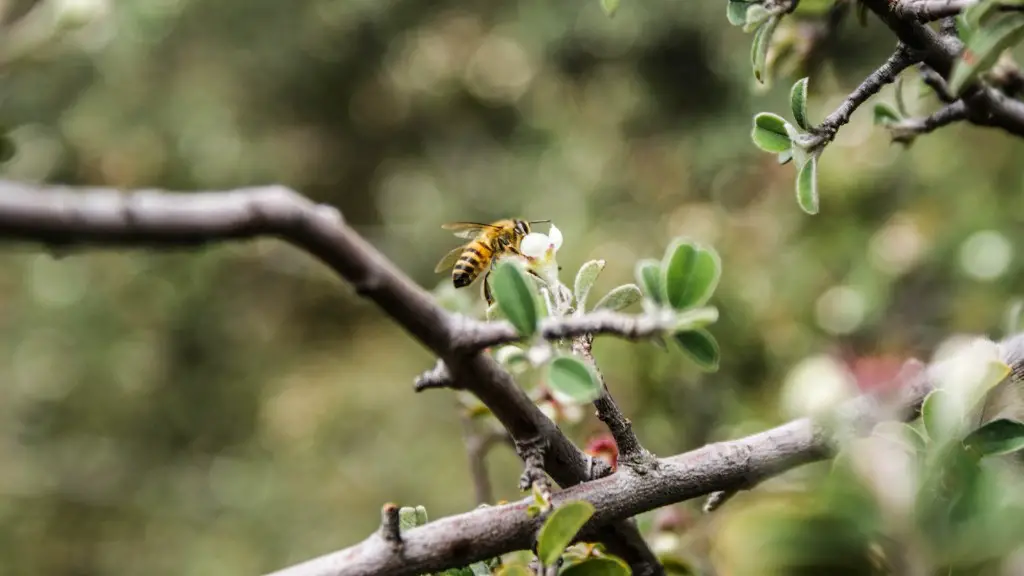Palm trees are hardy plants that can thrive in a variety of climates and regions with just a few basic care tips. While they don’t require a great deal of maintenance, the right environment and techniques can greatly improve the chances of a palm tree growing up strong. Before diving into the details of helping a palm tree grow, it’s useful to understand the necessary elements of a healthy tree.
Necessary Nutrients
Primary to the survival of any tree is an ample supply of water and nutrients. For a well-developed and healthy palm tree, nitrogen, potassium, and phosphorus are essential. These nutrients should be applied in a specific ratio for best results, typically about 6:4:4 for nitrogen, potassium, and phosphorus respectively. It is also important to remember pH content. Most plants prefer soil to be slightly acidic, so a pH level of 6.0-7.0 would be ideal. Most soil can be corrected with the addition of lime if the pH is too low.
Adequate Sunlight
Having access to enough sunlight is a critical factor for palm tree growth. Trees should be positioned in an area that gets full direct sunlight for at least 8-10 hours per day. If the given location does not meet this requirement, you can use a reflector or shade cloth to help make up for it. This will ensure your tree gets the maximum light possible.
Pruning Techniques
Palm trees do not need to be pruned very often, but when they are, it should be done in a specific way. Pruning should take place during warmer weather, usually sometime in late spring or early summer. When pruning, it’s important to remember to clip off any fronds that are hanging too close to the ground, or any other fronds that could potentially damage the tree if left to grow. Additionally, any dead or damaged fronds should be trimmed off as soon as possible.
Planting Location
It is very important to consider the location before planting a palm tree. Many palms require very specific requirements in terms of soil type, pH level, and sunshine. Additionally, certain palms such as the Canary Island date palm can grow to be very large and need a lot of room to grow. Be sure to choose a spot that will not cause any future problems in terms of soil composition.
Regular Watering
Palm trees should be watered regularly, especially during dry climates or periods. While most trees don’t need to be watered too often, palms will benefit from having water applied frequently, especially in the summer months. Soil should be kept moist, but not soggy and overwatering should be avoided at all costs.
Fertilising
Fertilizer is an important part of helping a palm tree grow. Adding fertilizer can help maintain a healthy tree, improve growth, and help protect against any possible diseases or pests. A balanced fertilizer will typically provide the necessary nitrogen, potassium, and phosphorus that the tree needs for good growth.
When fertilizing, it is important to start slowly by adding a small amount at first, and slowly increase it over time. The amount of fertilizer used will depend on the size of the tree, the soil quality, and other factors – be sure to consult with a professional if you’re unsure.
It is also important to remember not to over-fertilize, as this can damage the tree, especially when using a fertilizer with high levels of nitrogen. Additionally, when applying fertilizer, be sure to spread it evenly on all sides of the tree, and be sure to rinse off any excess.
Transplantation
Transplanting a palm tree is a difficult task that requires careful preparation and lots of patience. When transplanting a tree, it is important to choose an area that has plenty of sunlight and soil that meets the tree’s specific nutrient requirements.
Be sure to prepare the area by digging a large enough hole to accommodate the root ball, and back-fill with a pre-moistened potting soil mix. Additionally, it can be helpful to have some fertilizer mixed into the soil as well.
The tree should be gently removed from the original container and placed in the planting hole, making sure that it is level. Once the tree is planted, mulch can be used to guard against moisture loss, and the area can be watered until the soil is saturated.
Pest and Disease Prevention
Many pests can affect palm trees, including termites, mites, aphids, scale, and mealybugs. Taking the proper precautions can help to prevent any potential damage or infestations.
It is important to monitor the leaves of your tree regularly for any signs of discoloration, as this could indicate an issue with pests or disease. Applying a form of pesticide or fungicide can help to deter any attack. Additionally, keeping the area free of weeds and debris can be beneficial in helping discourage pests.
Organic options can be used as well, such as natural insect repellants or sprays that contain ingredients like neem oil or garlic. If no signs of pests or disease can be found, then it may be best to wait a few days and check again. Taking preventative measures is often easier than trying to fix an issue once it has arisen.
Fruiting and Harvesting
Fruiting and harvesting is a delicate process, and it is important to choose the right timing for it. Generally speaking, the fruits should be picked when they are still green and slightly unripe, as they tend to ripen quicker after being picked. Additionally, it is important to be careful when harvesting, as the fruits can easily be damaged or bruised.
When it comes to harvesting, the fruits should be cut from the tree with a pair of sharp pruning shears, making sure to leave the fruit on the stem. Cutting the stem will allow the fruit to ripen more quickly, and also make it easier to transport. It is important to check the fruit periodically until it is ripe enough to eat.
Water Conservation
The amount of water used on your palm trees can make a big difference in how well they grow and develop. During the summer months, the trees will need more water than usual, and in drier climates irrigation may be necessary. Additionally, using mulch can help to conserve moisture in the soil. This will help limit the amount of water needed and will also help keep the soil temperature cool and consistent.
When watering, drip irrigation is often recommended, as this helps to direct the water to the root zone, targeting where the moisture is needed most. Hand watering can be used, but it can be more difficult to ensure that the water is being delivered to the right spot. Additionally, hand watering can cause the soil to become disturbed, which could lead to root damage.
Weed Control
Weeds can be a nuisance for any garden, and palm trees are no exception. Weeds compete with the tree for water, light, and soil nutrients, which can lead to unhealthy development and can stunt the tree’s growth. Consequently, taking measures to control the weed population around a palm tree is necessary for its long-term health and survival.
Removing any weeds by hand is a great way to get rid of any unwanted populations. Additionally, mulching the area can be very effective, as it helps create a barrier between the weeds and the tree. Regularly check the area to make sure the weeds don’t return.
Climate Consideration
While palm trees are relatively easy to care for, it is important to be mindful of the climate in which they live. Although many varieties of palms are cold hardy, some may need more protection. For instance, if temperatures regularly drop below freezing, it may be beneficial to wrap some insulating material around the tree for extra protection.
In hot, dry climates, it is important to remember to provide the tree with extra water and protection from the strong heat. Properly positioning and shading trees can help ensure a healthy tree. Additionally, wind can be a factor, as it can dry out the soil and cause the tree to drop its leaves. If these conditions occur, it may be necessary to add extra irrigation.



